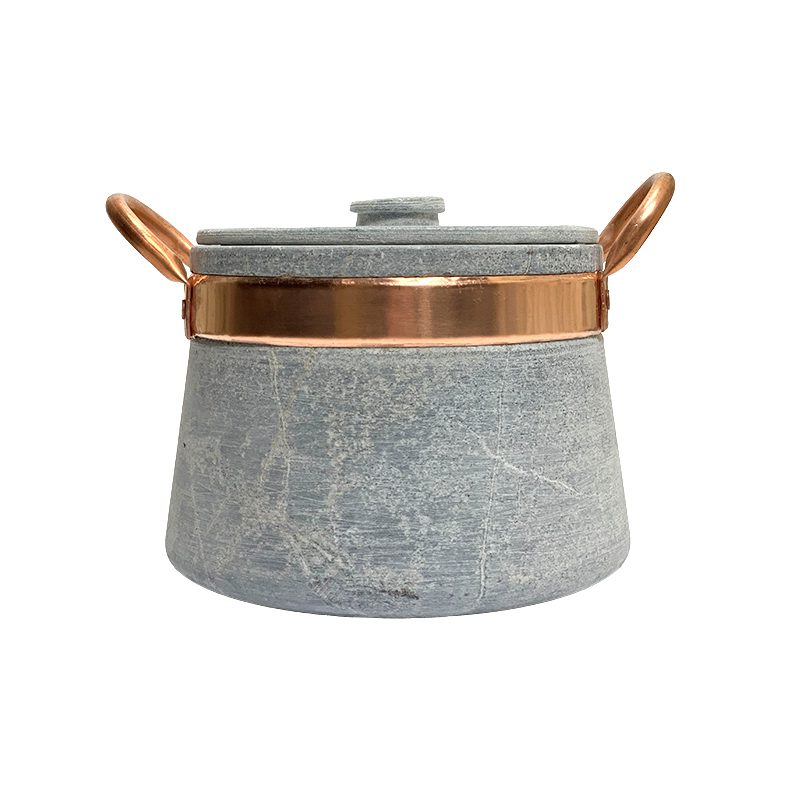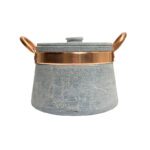What Material is a Stone Cooking Pot Made Of?
Stone cooking pots have been used by humans for thousands of years and remain one of the healthiest and most natural cookware options today. These pots are crafted from a metamorphic rock called Talc Schist, widely known as Soapstone. Thanks to its softness, excellent malleability, and heat retention, soapstone is perfect for creating durable and food-safe cooking vessels.
Historical Background
High-quality soapstone is rare, and one of the most notable sources is the Hezar Masjed Mountains near Mashhad, Iran, where stone cookware has been in use for millennia. In 1974, a joint excavation by Iranian and French archaeologists uncovered 60 stone tools near Mashhad, dating back 800,000 to 1 million years, marking the earliest evidence of tool-making humans in Iran and Southwest Asia.
Historical records also note that Imam Reza (peace be upon him), the eighth Shia Imam, visited this region about 1,200 years ago. Observing a mountain near Sanabad where stone pots were produced, he prayed for its blessings and instructed that his food should only be prepared in these stone vessels (Kitab Uyoon Akhbar al-Ridha, Sheikh Saduq, Vol. 1, p. 147).
Royal Stone Cooking Pot (Dizi Stone Pot)
The Royal Stone Cooking Pot, also known as the Dizi Stone Pot or Stone Casserole, is made from a single piece of soapstone and features a copper handle.
Key Features:
- Single-piece construction, crack-free and durable
- Made from soapstone sourced from Hezar Masjed Mountains, Mashhad
- Ideal for stews, soups, ash, and other liquid-based dishes
- Serves 4–5 people
- Rich in iron, silica, and essential minerals
- CNC-machined for precision, durability, and elegant design
- Suitable for gas stoves and oven use
- Typically shipped unseasoned; can be oiled before first use
Benefits of Stone Cooking Pots:
- Energy Efficiency: Gradually absorbs and retains heat, requiring less energy while preserving nutrients and preventing rapid evaporation.
- Enhanced Flavor: Food tastes richer and more natural; the smooth surface prevents sticking, ensuring easy cleaning.
- Faster Cooking: Functions like a safe, low-risk pressure cooker; meats and stews cook evenly within 2 hours on moderate heat.
- Hygienic & Easy to Clean: Dense stone resists bacteria; cleans easily with mild soap, water, or vinegar.
- Health Benefits:
- High iron content supports anemia prevention
- Silica strengthens nails and joints
- Natural minerals contribute to overall nutrition
Preparation and Use:
- Fully coat the interior and exterior with lard or olive oil.
- Place in a warm area for three days to allow oil absorption (sunlight or near a heater works well).
- Wash thoroughly before first use.
Usage Tips:
- Avoid frying; suitable only for soups, stews, and liquid dishes
- Cook on moderate heat; add boiling water if needed
- Use a heat diffuser; avoid direct flames
- Handle carefully to prevent cracks
- Avoid thermal shock; do not place hot pots on cold surfaces
Repairing Cracks:
Method 1: Fill the pot with water, add 1 tbsp turmeric, 1 tbsp starch, 1 tbsp tomato paste, and 250g lard. Simmer gently for 10 minutes, then let cool completely before washing.
Method 2: Mix egg white with lime to form a soft paste. Apply inside and outside, especially on cracks. Let dry, wash, and reuse.
Conclusion
Stone cooking pots combine ancient tradition, natural materials, and modern craftsmanship, delivering a healthy, nutrient-rich, and flavorful cooking experience. Their durability, hygienic properties, and superior cooking performance make them an essential addition to any kitchen.






Reviews
Clear filtersThere are no reviews yet.